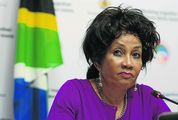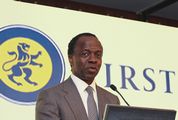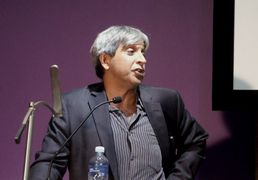BAD news internationally might lead you to believe it is better not to risk investing offshore — but diversification is always a good move, as long as you do your homework.
Greg Hopkins, chief investment officer at PSG Asset Management and manager of the PSG Global Equity Fund, said: “A good place to look is where there is still significant fear, which has driven valuations to attractive levels. Finding high-quality companies in Europe would be a good place to start.”
Peter Brooke, head of MacroSolutions at Old Mutual Investment Group South Africa, said although the weakening rand had boosted returns in funds, he did not expect the trend to continue for much longer.
“The benefit of diversification, combined with the more attractive value of international equities, means we have maximum offshore exposure in our funds, regardless of currency weakness,” he said.
And global equities would outperform global bonds.
“Developed-world government bonds are offering no value, so our international exposure is heavily tilted to equity. To benefit from the world’s quest for yield, we do hold emerging market debt and some international property, which offers an attractive yield plus a growth upside.”
Better growth prospects, higher yields and stronger fiscal positions remained a lure for investors in emerging-market debt — “clearly illustrated by foreign investment to the tune of R86bn into the South African bond market in 2012”.
Mr Brooke said Japan was a potential game-changer because of its central bank’s intention to drive up inflation and stimulate the Nikkei stock index. The weaker yen would be positive for Japanese exports, Mr Brooke said.
Ian Anderson, chief investment officer at Grindrod Asset Management, said that simply “buying the market” offshore — such as an exchange-traded fund tracking the S&P500 — would be a mistake if investors were looking for good long-term returns.
“You’d need the rand to weaken significantly -by 8% to 10% a year — to do better than you would locally,” Mr Anderson said.
“We’ve had a lot of success with global listed property funds, which still have attractive yields and growth rates, but in equities it’s a stock-picker’s market right now. It’s still viable, but you have to be careful.”
Paul Hansen, director of retail investing at Stanlib, agreed that, after outperforming equities in the past four years, global listed property’s forward yield of up to 7% was looking good.
“We’re still overweight in this sector. Bonds are looking expensive but can still make a useful diversifier— if there’s a pullback in the equity market you get that risk-off position. They might gain in value during any such pullback. However, we are still underweight in bonds and cash.”
Mr Hansen said Stanlib preferred corporate bonds with 25% in emerging markets.
Jeremy Gardiner of Investec Asset Management said that, thanks to a well-regulated stock exchange and the second-soundest banking system next to Switzerland, ” financially we are in relatively good shape”.
“I would struggle to take money offshore at these levels,” Mr Gardiner said.
How and what to buy
Peter Brooke of Old Mutual Investment Group SA said asset allocation was a powerful tool.
"A carefully diversified portfolio that includes some credit, convertible bonds, some inflation linkers, high-yielding local shares and good quality international assets should still grind out decent, positive real returns," he said.
For offshore equity, he said that returns had to be be similar to those from South African equities — "but international equities provide better risk-adjusted returns and diversification benefits. We also expect real returns on equities to exceed those on offshore bonds by some 7.5% a year."
• This article was first published in Sunday Times: Business Times




























Register/Login
Close XMy News
You can only set up or view personalised news headlines when you are logged in as a registered user. Thereafter you can choose the sectors of industry in which you are interested, and the latest articles from those sectors will display in this area of your console.
Login or Register.Top Stories
My Watchlist
You can only set up or view your share watchlist when you are logged in as a registered user. Thereafter you can select a list of companies and enter your share details to monitor their performance.
Login or Register.My Clippings
You can only clip articles when you are logged in as a registered user. Thereafter you can click on the "Read later" icon at the top of an article to save it to this area of your console, where you can return to read it at any time.
Login or Register.Change: -1.21%
Change: -1.31%
Change: -1.11%
Change: -1.12%
Change: -2.16%
Data supplied by Profile Data
Change: 0.00%
Change: 0.00%
Change: -1.21%
Change: 0.00%
Change: 0.00%
Data supplied by Profile Data
Change: -0.41%
Change: -0.29%
Change: -0.33%
Change: -0.45%
Change: -0.19%
Data supplied by Profile Data
Change: 0.00%
Change: 0.00%
Change: 0.00%
Change: 0.00%
Change: 0.00%
Data supplied by Profile Data